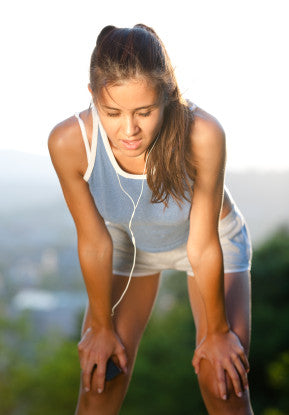Your Cart is Empty
FREE SHIPPING ON ORDERS OVER $20 - FREE HEALTHY SNACK WITH EVERY PURCHASE
Our site uses cookies. By using our site, you agree to our use of cookies. Privacy Policy
Menu
-
- Health Conditions
- Maximum Performance
- Accessories & Gear
- Altitude Training
- Athlete Overtraining Syndrome
- Core Strength
- Dangers of NSAIDS
- Detox / Cleanse
- Endurance Nutrition & Supplementation
- Energy Boosting
- Exercise & Immunity
- Flexibility
- Hydration
- Hypoglycemia / Bonking
- Hyponatremia
- Immunity Support
- Lab Testing
- Muscle Building
- Recovery
- Sports Drinks
- Package Bundles
- Adrenal Support
- Healthy Aging
- Athletic Performance
- Blood Sugar Balance
- Bone Support
- Daily Nutrition Essentials
- Daily Wellness
- Energy Support
- Fat Loss Support Bundle
- Female Fertility Bundle
- Female Hormone Balance
- Gut Health
- Heart Health
- Immunity Boosters
- Inflammation Control
- Injury Repair
- Joint Support
- Liver Support
- Menopause Support
- Men's Wellness
- Mood Lift
- Muscle Cramp Relief
- Muscle Builder
- Recovery
- Safe Travels
- Sleep Enhancers
- Stress Relief
- Thyroid Support
- Brands
- Blog
-
- Login

FREE SHIPPING ON ORDERS OVER $20 - FREE HEALTHY SNACK WITH EVERY PURCHASE
Our site uses cookies. By using our site, you agree to our use of cookies. Privacy Policy
Sweating and Detoxification
February 14, 2020 4 min read

It’s often said that sweating helps the body ‘detox’.
In one sense, this makes sense – the body is always working to rid itself of the byproducts of metabolism - thus we urinate and defecate to this end. However, you’ll never read anything in a physiology textbook about how the process of sweating also helps to remove toxic pollutants from the body – it's not exactly mainstream thinking.
In traditional medical-physiological texts, sweating is only defined as a means of thermoregulation, or controlling body temperature. When we look at it that way, when we sweat, it allows the skin to cool thereby lowering body temperature.
Basic Physiology
Physiology texts teach that sweat is comprised of 99% water and the remaining 1% is a mixture of minerals like sodium, chloride, magnesium, potassium (electrolytes) and very small amounts of trace minerals like zinc, copper, iron, chromium and others.
In addition, small amounts of true physiological waste products can be found in sweat as well and include the products of protein breakdown – ammonia, urea, and uric acid.
These waste products are also found in much larger amounts in urine, hence the kidneys bear the greater burden for removing them.
Mainstream Medicine & Detox
Mainstream medicine will deny that sweating is an important avenue for detox, let alone that detoxification is even a ‘real’ event, much the same way that environmental pollutants are usually neglected as a possible cause of ill health, and chemical prescriptions are the only answer to a patient’s symptoms.
Yet, we’re learning much more about the role sweat plays in true detoxification. Newer studies show that there is indeed much more to sweat than water, electrolytes and minor waste products of normal metabolism.
What's in Sweat?
A study from the Archives of Environmental and Contamination Toxicology(1) had this to say: "Many toxic elements appeared to be preferentially excreted through sweat. Presumably stored in tissues, some toxic elements readily identified in the perspiration of some participants were not found in their serum (blood). Induced sweating appears to be a potential method for elimination of many toxic elements from the human body."
The authors go on to say that “Biomonitoring (lab testing) for toxic elements through blood and/or urine testing may underestimate the total body burden of such toxicants. Sweat analysis should be considered as an additional method for monitoring bioaccumulation of toxic elements in humans.”
Another larger study found that in people with higher exposure to the widespread metal pollutants arsenic, cadmium, lead and mercury, higher levels were found in their sweat than in their blood or urine, and that removal of these toxins through sweating could meet or exceed excretion through urination. In conclusion, the researchers state “Sweating deserves consideration for toxic element detoxification.”(2)
Bisphenol A & Phthalates
Lastly, other studies have shown that two notorious toxic compounds, bisphenol A (BPA) and phthalates,are excreted through the sweat.
BPA is used in the manufacture of common plastics like water bottles, sports equipment, in the lining of water pipes and beverage cans as well as in thermal paper used for sales receipts. (BPA has hormone-like properties and should be avoided.)
Pthalates are another chemical used in plastics and are widely known as endocrine (hormone) disruptors, and linked to breast cancer.
BPA was found in the sweat of people who had none detected in their blood or urine (3), while phthalates were found in twice the amount in sweat compared to urine, and in some people it was detected only in their sweat and not in their urine.(4)
Sweat Therapy
Knowing this, then it’s true that sweating can be considered an important method of detox.
As a doctor that focuses on wellness, I encourage all of my patients to exercise – for all the obvious health benefits – but also so they sweat. In order to be truly healthy, the body must get rid of wastes through all available channels – through defecation, urination, and sweat – which are often overlooked.
(Exercise also causes the lymphatic system to circulate, which is another important, yet traditionally ignored aspect of circulation and immune system health).
Keep in mind you don’t have to exercise to sweat. Saunas and baths are also great ways to get sweaty and enhance the removal of toxins from the body. In fact many clinics that specialize in detoxification will have saunas or other similar modalities for patients to use as part of their therapy.
So, if you can’t sweat for some reason (you’re injured, it’s too cold outside) then try to get a sweat in a sauna or hot bath –we all know how much better we feel after a good sweat, and your body will have fewer toxins as well.
Here's some additional information about detoxification.
1. Genuis SJ, et al. Blood, urine, and sweat (BUS) study: monitoring and elimination of bioaccumulated toxic elements. Arch Environ Contam Toxicol. 2011 Aug ;61(2):344-57.
2. Sears ME, et al. Arsenic, cadmium, lead, and mercury in sweat: a systematic review. J Environ Public Health.
2012 ;2012:184745.
3. Genuis SJ, et al. Human excretion of bisphenol A: blood, urine, and sweat (BUS) study. J Environ Public Health.
2012 ;2012:185731.
4. Genuis SJ, et al: Human elimination of phthalate compounds: blood, urine, and sweat (BUS) study. Scientific World Journal. 2012 ;2012:615068.
Leave a comment
Comments will be approved before showing up.
Free Athletic Stuff
-
Free Water Bottle With Purchase Of $100

Simply Add To Cart & Use Coupon Code: FREEBOTTLE
Free Visor With Purchase Of $150

Simply Add To Cart & Use Coupon Code: FREEVISOR
{"statementLink":"","footerHtml":"","hideMobile":false,"hideTrigger":false,"disableBgProcess":false,"language":"en","position":"left","leadColor":"#146ff8","triggerColor":"#146ff8","triggerRadius":"50%","triggerPositionX":"right","triggerPositionY":"bottom","triggerIcon":"wheels","triggerSize":"medium","triggerOffsetX":20,"triggerOffsetY":20,"mobile":{"triggerSize":"small","triggerPositionX":"right","triggerPositionY":"bottom","triggerOffsetX":10,"triggerOffsetY":10,"triggerRadius":"50%"}}
